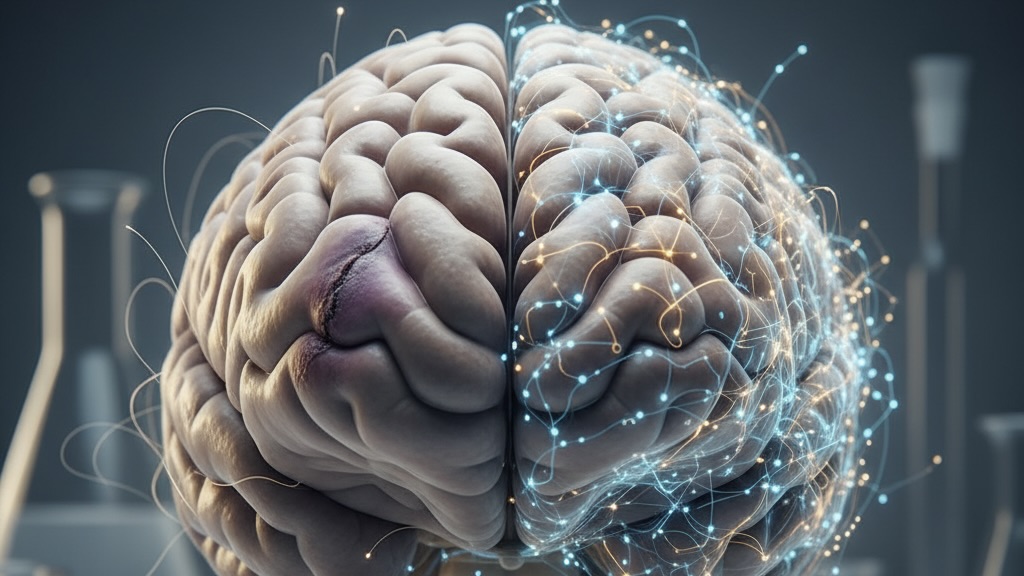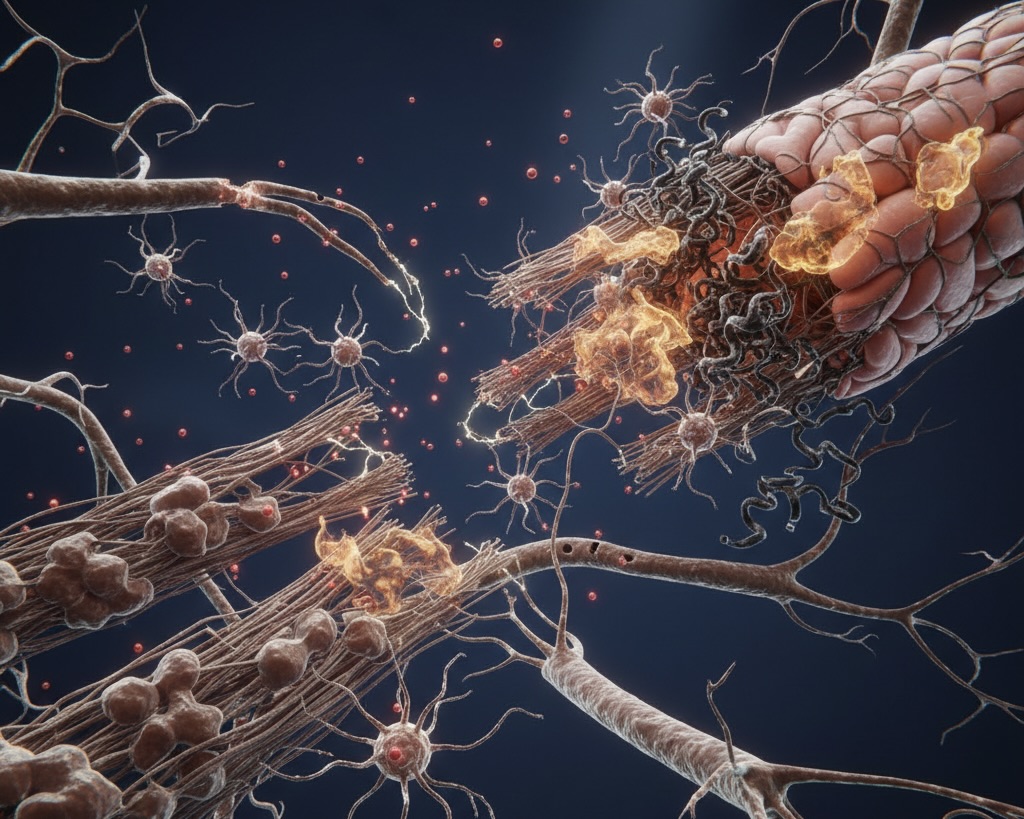Understanding brain damage No longer merely viewing it as an end, but as the beginning of a recovery process that is complex and dynamic. In-depth analysis shows that behind every injury there are a series of biological processes that determine the extent of damage and the potential for repair. From sudden injuries caused by trauma to declines in function due to chronic illness, the human brain demonstrates vulnerability as well as an extraordinary capacity for recovery.
The advances in neuroscience are opening a new window, showing how the right interventions can guide the brain to repair itself. This report comprehensively examines various causal factors, functional impacts, and a broad spectrum of therapeutic interventions ranging from conventional rehabilitation to future neurorestoration technologies.
Uncovering various causes of brain damage
brain damage It is not a single condition, but the final outcome of various pathological processes that can be classified based on their onset and progression. An in-depth understanding of this etiology is the key to designing effective prevention strategies and targeted management, because each cause requires a different approach.
These factors may originate from external forces that physically damage nerves, as well as from internal processes that slowly erode nerve function. In general, these triggers can be divided into two main categories, namely acute ones that occur suddenly and chronic ones that develop gradually over a long period.
Acute Injury vs. Chronic: Two Faces of Brain Damage
Acute brain injury occurs suddenly, often as a result of a single traumatic event. The symptoms appear quickly and can be very severe, for example in cases. Traumatic Brain Injury (TBI) due to a traffic accident or a fall. Vascular conditions such as stroke, in which the blood flow to the brain is suddenly blocked (ischemic) or ruptured (hemorrhagic), are also included in this category. Acute infections such as meningitis and encephalitis can also trigger acute damage through an intense inflammatory response.
On the other hand, brain damage Chronic conditions develop slowly, often without being noticed for months to years. This condition tends to be progressive, meaning its symptoms will continue to worsen over time. Neurodegenerative diseases are the most common examples, such as Alzheimer's disease, which is characterized by gradual memory loss, and Parkinson's disease, which disrupts motor control. Long-term exposure to neurotoxins, such as excessive alcohol consumption, is also included in this category because it gradually damages nerve cells.
The fundamental difference between the two lies in the intervention window. In acute conditions, the main focus is emergency management to limit secondary damage. Meanwhile, in chronic conditions, the goal is to slow the rate of disease progression and manage symptoms to maintain quality of life for as long as possible.
Risk Factors: A combination of genetics, environment, and lifestyle.
A person's vulnerability to brain damage is influenced by the complex interaction between biological factors, the environment, and behavior. Biological factors include genetic predisposition that increases the risk of diseases such as Alzheimer's disease and epilepsy, as well as age, which is the most significant risk factor for most neurodegenerative diseases. Understanding these factors that cannot be changed is important for the identification of high-risk individuals.
Environmental factors also play a crucial role. Exposure to neurotoxins in the workplace or living environment, such as lead from old paint, pesticides, and air pollution, can directly damage nerve cells. In addition, psychosocial factors such as chronic stress and childhood trauma have been shown to have long-term negative effects on the structure and health of the brain.
However, the most controllable category of risk factors is behavior and lifestyle. These habits directly modulate brain health, including:
- Chronic sleep deprivation: Disrupts the brain's metabolic waste clearance process.
- Unhealthy eating pattern: Processed foods high in sugar and saturated fats trigger inflammation.
- Smoking: Damaging blood vessels and significantly increasing the risk of stroke.
- Lack of physical activity: Reducing blood flow to the brain and levels of nerve growth factor.
- Substance abuse: Alcohol and narcotics have direct neurotoxic effects.
These factors do not stand alone, but rather form a 'risk network' that mutually reinforces each other. Stress can trigger sleep deprivation, which in turn affects food choices. Therefore, the most effective prevention strategy is a holistic approach that addresses all aspects of lifestyle in an integrated manner.
Behind the Scenes: The Biological Mechanisms of Brain Damage
After an initial trigger occurs, a series of complex biological events will take place at the cellular level. This process does not stop at the initial damage (primary injury), but continues into a cascade of secondary damage that damages the surrounding tissue. Understanding this dynamic is crucial, because it is this secondary phase that offers a critical time window for medical intervention to save brain cells that can still be saved.
This process involves a variety of mechanisms, ranging from programmed cell death to a widespread inflammatory response. This cascade explains why a patient's symptoms may continue to progress or worsen within several hours to days after the initial incident, such as a stroke or a TBI.
Secondary Injury Cascade: The Destructive Domino Effect
Primary injury is the structural damage that occurs immediately due to mechanical forces or loss of blood supply. In TBI, this can involve tissue tearing and bleeding, whereas in ischemic stroke, this is cell death at the center of the occlusion. This primary damage is permanent and cannot be altered, causing rapid cell death through the process of necrosis.
However, the damage does not stop there. Primary injury triggers the secondary injury cascade, namely a series of damaging biochemical processes that spread to the surrounding area known as the penumbra. This process can last for hours to days and includes mechanisms such as oxidative stress, mitochondrial dysfunction, and neuroinflammation. Unlike primary injury, this secondary process has the potential to be modified or halted. This is why prompt medical treatment is crucial to limit its extent. brain damage Overall.
The core of this cascade is cellular energy failure. Disruption of blood supply causes ATP production to stop, triggers the release of toxic neurotransmitters, and ultimately activates the programmed cell death pathway (apoptosis) in the penumbra. The cells in this area are in a dying state but not yet fully dead, making them the primary target of neuroprotective therapy.
The role of neuroinflammation in brain damage
Neuroinflammation, or the immune response within the nervous system, is a major component of the secondary injury cascade. This process is initiated by damage to the blood-brain barrier (BBB), a highly selective protective layer. When the BBB leaks, blood components and immune cells from the body's circulation can enter brain tissue, triggering an inflammatory response.
Simultaneously, brain-resident immune cells, microglia and astrocytes, become activated in response to danger signals from damaged cells. This activation causes a massive release of inflammatory mediators such as cytokines and free radicals, which worsens brain damage.
Nevertheless, neuroinflammation has a dual role. In the early phase, this response is beneficial for clearing dead cells and limiting the spread of damage. However, if it persists chronically and remains uncontrolled, it becomes highly damaging, hinders the repair process, and contributes to the death of secondary nerve cells. Therefore, modern therapeutic strategies no longer aim to completely suppress inflammation, but to modulate it by suppressing the damaging aspects while preserving its protective function.
The Path to Recovery: Harnessing the Power of the Brain
Contrary to the long-standing dogma that the adult brain is static, modern science has proven the existence of an extraordinary capacity to change and adapt, called neuroplasticity. This ability is the basis for all learning processes, memory formation, and, most importantly, functional recovery after it occurs. brain damage.
The modern therapeutic approach focuses on the utilization and guidance of this neuroplasticity process. The goal is not only to reduce symptoms, but also to actively promote the reorganization of neural circuits to maximize the patient's functional independence. This process requires a multidisciplinary approach that combines rehabilitation, pharmacotherapy, and brain stimulation technology.
Foundations of Recovery: The Power of Neuroplasticity and Rehabilitation
Neuroplasticity is the ability of the nervous system to modify its structure and function in response to experience or injury. This occurs through several mechanisms, such as strengthening connections between neurons (synaptic plasticity), the formation of new connections (structural plasticity), and the ability of a healthy brain region to take over the function of the damaged region (functional plasticity).
One of the key molecules that regulates this process is Brain-Derived Neurotrophic Factor (Brain-derived neurotrophic factor). BDNF acts as a “fertilizer” for nerve cells, supporting their survival and promoting the growth of new synapses. Physical activity, especially aerobic exercise, has been shown to significantly increase BDNF levels, which are strongly correlated with better motor and cognitive recovery.
Rehabilitation therapies such as physical therapy, occupational therapy, and speech therapy are ways to actively guide neuroplasticity. Through repetitive and task-oriented training, this therapy "forces" the brain to form new functional neural pathways. Specific techniques such as Constraint-Induced Movement Therapy (CIMT), in which the healthy limb is restrained to encourage the use of the weak side, has been shown to be capable of promoting significant reorganization in the motor cortex.
The Future of Neurorestoration: Advanced Technologies and Personalized Therapy
Field of recovery brain damage It is undergoing rapid transformation thanks to advances in technology. The future of medicine will no longer adhere to a "one-size-fits-all" approach, but move toward therapies that are more personalized, interactive, and accessible.
The integration of advanced technology has shown promising results. Virtual Reality (VR) creates a safe and immersive training environment, robotics provides high-intensity movement assistance, and Brain-Computer Interfaces(BCI) offers hope for paralyzed patients to be able to control external devices with their minds. This technology not only increases the intensity of therapy but also the patient's motivation.
In addition, the future approach will increasingly focus on synergistic combination therapy. Imagine a patient receiving a drug to enhance the brain's neurochemical environment, followed by a session of non-invasive brain stimulation such as TMS to “prepare” the motor circuitry, and ending with an intensive rehabilitation session guided by a robot. This multilayered approach is expected to maximize the potential for neuroplasticity and significantly accelerate functional recovery.
Overall, the understanding of brain damage has evolved from a static view to a dynamic one. Although significant challenges remain, focusing on harnessing neuroplasticity through a combination of intensive rehabilitation, a healthy lifestyle, and advanced technology provides new hope for millions of people around the world. This integrated approach is key not only to surviving after a brain injury, but also to thriving and regaining quality of life.
For deeper insight into cellular mechanisms, a comparison of the different types of cell death, and a detailed evaluation of each therapeutic intervention, continue reading its full analysis at Insemination.
Discover more from Insimen
Subscribe to get the latest posts sent to your email.











